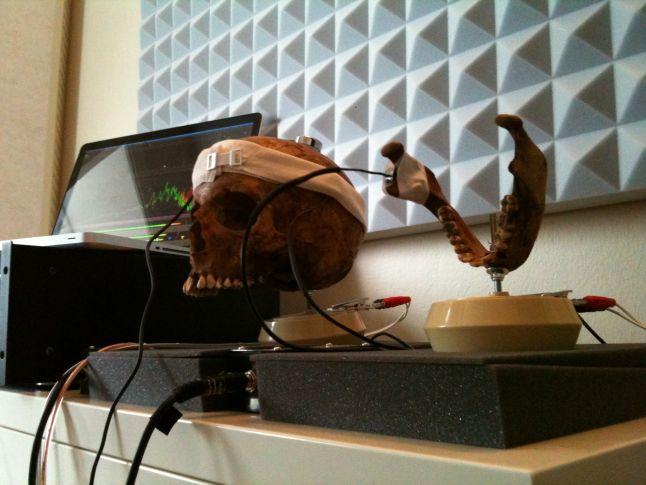Inside: Composer records game soundtrack using a human skull
Martin Stig Andersen, who recorded the soundtrack, began his work studying orchestral composition at a conservatory. Now he uses a dead person’s head

The soundtrack to one of the year’s most celebrated, and creepiest games, was made using a novel recording technique. A human skull.
Inside’s composer, Martin Stig Andersen, has revealed that he used a dead person’s head to help create the sound of the game.
Inside is a side-scrolling game, released for Xbox One and PC on Steam, where people walk through increasingly terrifying situations. It is a platform game, but one that mostly relies on the sorts of restrained horror more associated with indie cinema.
And some of that effect was created by Mr Anderson, who designed the sound using a skull that used to belong to a living human.
Mr Anderson described in a lengthy article for Gamasutra how he had begun his work as a composer studying orchestral composition at a conservatory, But that same work had led him to sending sounds through a human head, he wrote.
He came to that through an interest in experimental electronic music, such as musique concrete. That work involved taking everyday sounds and extracting musical material to it, which led him to work on sound design.
It was that work that led him to creating the soundscape for Inside.
“Early on, as we were working on Inside, I had the idea of working with a human skull because I think it’s very interesting how the sound of your own voice sounds very different in your own head,” wrote Mr Anderson.
He made reference to the strange experience of having yourself recorded. When people do so, they tend to find that it sounds nothing like what they hear, or had expected – everything sounds “much softer in there, more full, in a way”, he wrote.
That effect comes because the sound that people actually hear when they talk is the sound of their voice resonating through their body. Mr Anderson notes that it can be heard even more extremely by blocking your ears while speaking.
Enjoy unlimited access to 100 million ad-free songs and podcasts with Amazon Music
Sign up now for a 30-day free trial. Terms apply.
ADVERTISEMENT. If you sign up to this service we will earn commission. This revenue helps to fund journalism across The Independent.
Enjoy unlimited access to 100 million ad-free songs and podcasts with Amazon Music
Sign up now for a 30-day free trial. Terms apply.
ADVERTISEMENT. If you sign up to this service we will earn commission. This revenue helps to fund journalism across The Independent.
“So I had the basic idea of trying to recreate sounds as they would sound if they were happening inside your head,” he wrote. “That was the curious thought that led me to acquire a human skull and experiment with it.”
Mr Anderson then worked with co-composer SØS Gunver Ryberg to create the kinds of music that would work well when played through a human skull – mostly synth sounds, but aiming not to have the kind of 80s-inspired baggage that might have. They gradually came to realise what sort of sounds might work best played through the head, they found – and so they did it, putting a speaker on one side of it and picking up the noise through a microphone.
The composer even shared different comparisons of how the sound worked with and without the skull.
He then compared that with the one played through the skull. The sound still required some post-processing to make sure that it worked with the head, he said.
“The end result, after the post-processing, is generally a bit creepy and cold. The sound has almost a chill about it,” Mr Anderson wrote in the piece. “Eventually all the teeth fell out of the skull because of the vibrations, but while they were still there they created this small vibrating sound that I think was unsettling but also strangely familiar to people. Because we all know it, in a way.”
There were some technical problems involved in recording through a human head. The team had to try a number of different microphones before finding one that picked up the sound properly, and had to apply a range of different processing to make sure that the sound picked up from it was listenable.
Mr Anderson said that he probably won’t work with the skull again, despite how happy he was with it.
“Usually with specific elements like this, I prefer to move on to the next thing; the use of the skull helped define the sonic quality of Inside, and now I think it will remain on the shelf of my studio for the foreseeable future.”
Bookmark popover
Removed from bookmarks